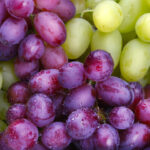U.S.: Weather could shorten California grape season, says Pandol Bros

A wet and hot summer in California in 2015 could make the table grape industry's marketing window shorter than recent years, with several small heatwaves experienced over the period. 
A representative of grape company Pandol Brothers told www.freshfruitportal.com the state has had more summer rain and higher humidity than it had done in recent memory, but he added the variable temperatures we not unexpected.
"We've had five heatwaves of a few days being above 100°F, or 38°C - there's nothing terribly different there," special projects director John Pandol said.
"Our perspective is that certainly we've had more humidity during the entire growing cycle, so the disease pressure is higher than it normally is, and it looks like we will have a much wetter fall - El Niño like 1998 comes to mind.
"The last time we had rain like this was 17 years ago. So these types of cycles are maybe twice in a generation kinds of things."
Pandol said the company had been more aggressive in preventative treatments of botrytis and other diseases simply because of the pressure.
"How will it impact supply? We shall see," he said, adding it was less likely the industry would be able to supply the market through December and into January as it had done in recent years.
"One challenge is that retailers may think it's normal to go into January with American grapes, and this year that may not be the case."
Regarding the transition to Southern Hemisphere table grape supply, Pandol said it seemed likely Peru - especially the north of the country - would attempt to come into the U.S. earlier with seedless varieties.
"The north of Peru used to be focused on Red Globes, and now they're increasingly planting seedless grapes, and they will of course want to get harvested before their rainy season, so that’s where we see the possible overlap," he said.
There is not normally overlap with Chile's northern regions, he added.
In addition, the representative said he expected bigger shipments from Chile and Peru into the U.S. this season due to the strong U.S. dollar in relation to other currencies.
Photo: www.shutterstock.com














































